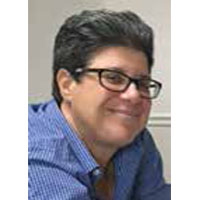
By Michele Karlsberg–
Flower of Iowa, an historical novel by Lance Ringel, is a sprawling tale of battle, courage, the resilience of the human spirit, and the transformative power of love. The grand epic showcases unforgettable characters, meticulous research, and exhilarating storytelling. Recently, I had a chance to speak with Ringel about this work.
Michele Karlsberg: What was the inspiration for Flower of Iowa?
Lance Ringel: As a teenager, I was introduced to the Great War through Barbara Tuchman’s amazing book The Guns of August and a CBS-TV series called World War One. They both made a great impression on me, spurring a fascination with the war that changed our world so completely. Fast-forward three decades later. I was stuck in bed, recovering from a near-fatal bout of hepatitis, and the local PBS station began re-airing the CBS series. At the same time, controversy arose over Bill Clinton’s campaign promise that eventually resulted in the “Don’t Ask, Don’t Tell” policy. I don’t know if it was inspiration or delirium, but an idea came to me: How about writing an historical novel in which two soldiers fall in love in the First World War?
Michele Karlsberg: You embarked on an ambitious period of research for Flower of Iowa. How far did it take you?
Lance Ringel: My research took me across America and through Europe. To tell this story properly, I needed to see with my own eyes the actual Great War battlefields of France and Belgium, as well as their surrounding towns. I scoured Iowa to find the most suitable town to be Tommy Flowers’ birthplace, eventually choosing the village of Brooklyn. And I sat for countless hours in libraries and museums on both sides of the Atlantic. The best source for my research was the extraordinary Imperial War Museum in London. The staff was immensely helpful to me, an American nobody who’d just wandered in. Within minutes, I was seated at a research table holding an original Great War trench map from 1918—one that had been handled by British soldiers. That just made my mind spin.
Michele Karlsberg: What evidence is there of homosexual relationships during WWI?
Lance Ringel: There are plenty of tantalizing clues. The Great War and Modern Memory by Paul Fussell includes a chapter called “Soldier Boys” about homoeroticism in World War I British literature. But since he wrote his book in the early 1970s, Fussell stressed the romantic rather than the sexual nature of these relationships. In Henry Berry’s oral history Make the Kaiser Dance, conservative Republican Congressman Hamilton Fish (a former Doughboy) noted that the Moroccans would not kill young German prisoners of war, but kept them “for boyfriends.” (I use this in a subplot in my novel.) The famous German scholar Magnus Hirschfeld, arguably the founder of the modern gay movement, wrote a “Sexual History of the World War” in the 1930s that documented sexual activity between soldiers. Homosexual relationships in the Great War certainly happened, but were largely erased from history due to the mores of the time.
A journalist and writer for four decades, Lance Ringel has penned five novels and three plays. www.LanceRingel.com
Michele Karlsberg Marketing and Management specializes in publicity for the LGBTQ+ community. This year, Karlsberg celebrates 32 years of successful marketing campaigns. For more information: https://www.michelekarlsberg.com
Published on February 25, 2021
Recent Comments